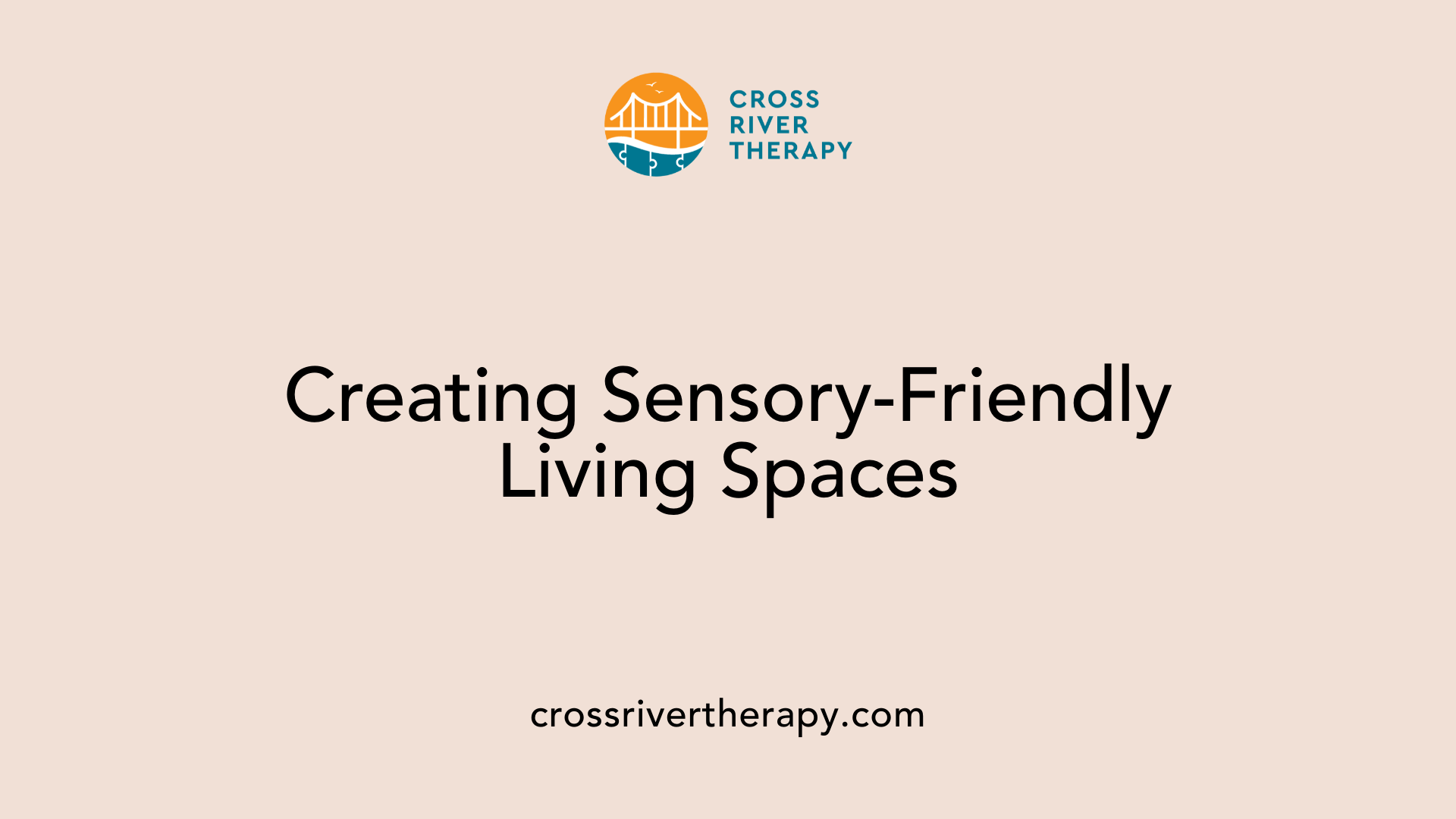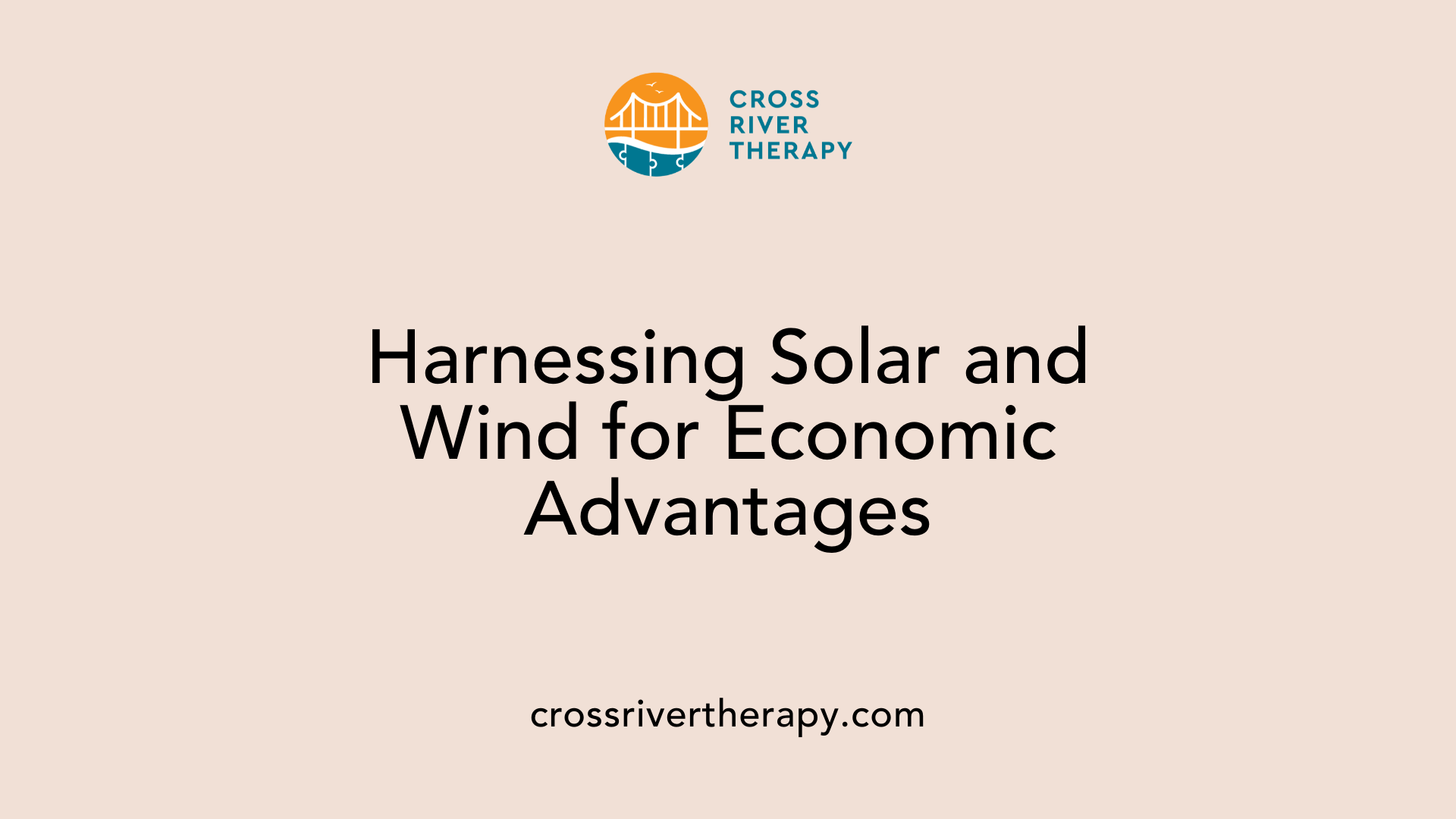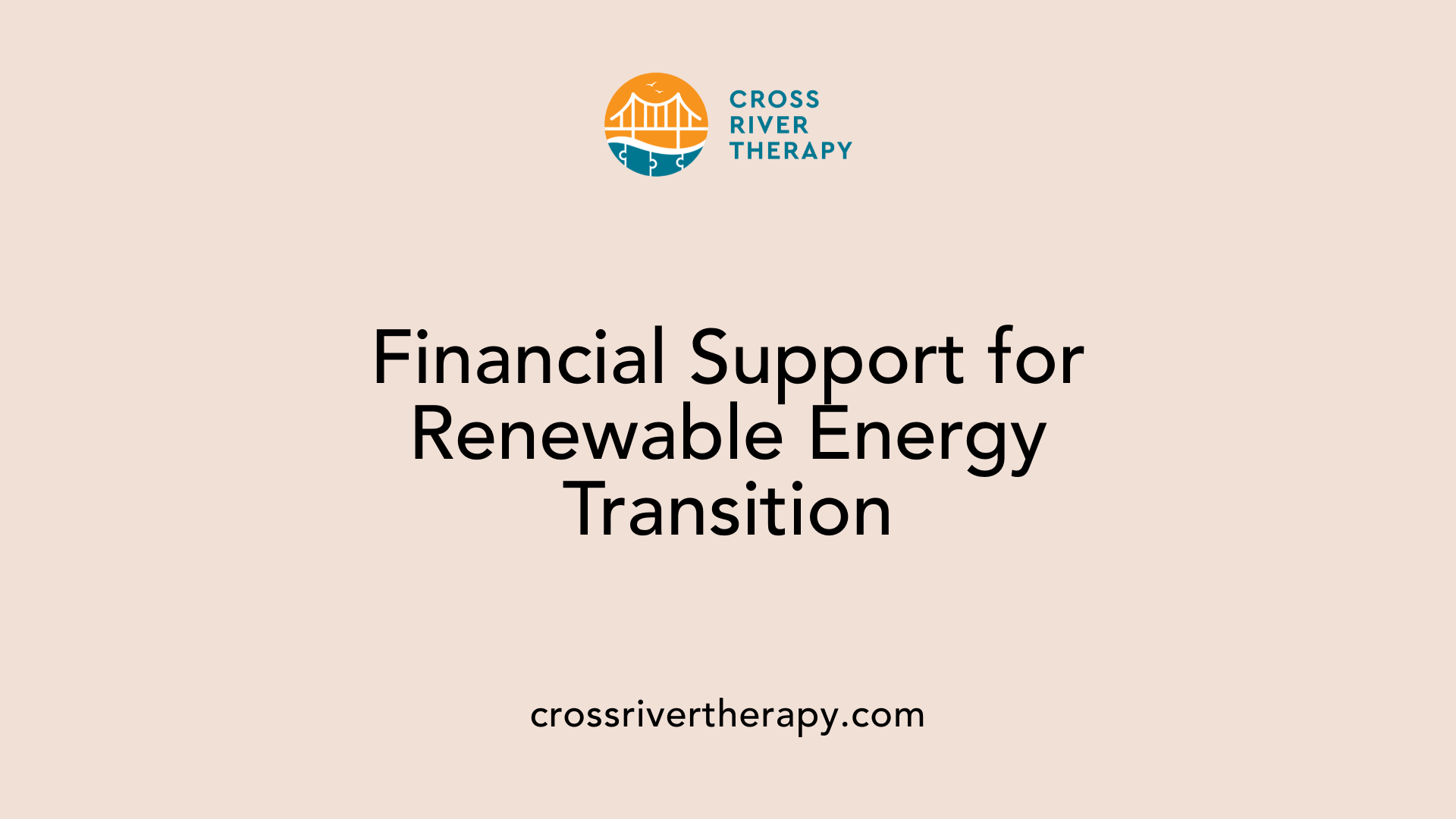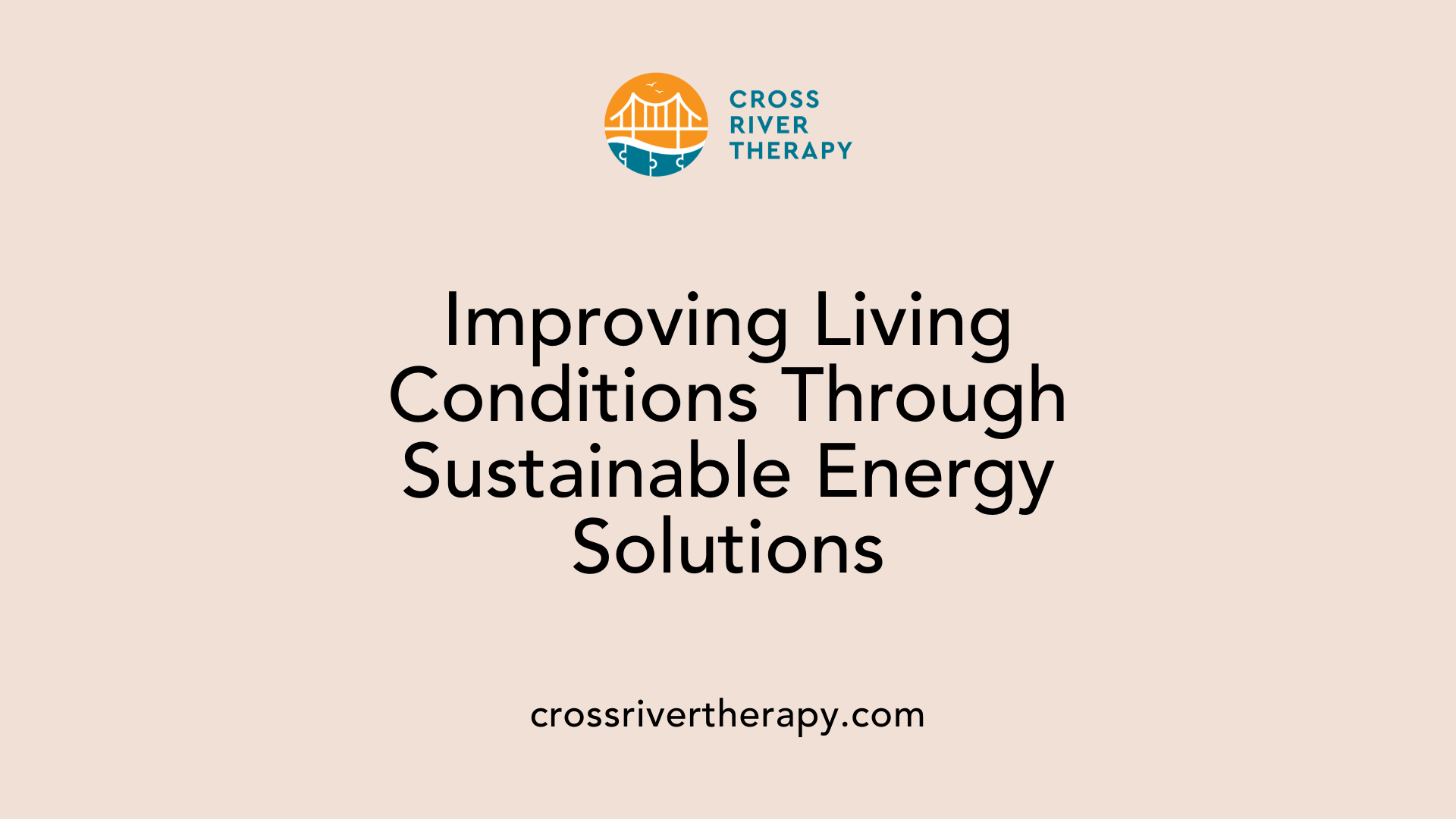As families strive to create the best living environments for individuals with autism, integrating renewable energy solutions plays a pivotal role. These energy systems not only contribute to environmental sustainability but also bring numerous benefits to autism-friendly homes, from financial savings to enhanced sensory settings. This article delves into how renewable energy can support families in creating comfortable, efficient, and supportive homes for their loved ones with autism.
The Role of Renewable Energy in Autism Homes

Advantages of renewable energy in autism homes
For families with children on the autism spectrum, transitioning to renewable energy sources, such as solar and wind, can lead to significant cost savings. By adopting these technologies, families can cut annual electricity bills from an average of $1,200 down to about $600, providing room in their budgets for essential services and therapies. The economic relief allows families to allocate valuable resources to autism-related needs, promoting financial stability.
Environmental and sensory benefits
Renewable energy solutions lead to improved environmental conditions. The reduction in greenhouse gas emissions contributes to better air quality, vital for the wellbeing of individuals with autism, who may be sensitive to environmental pollutants. Moreover, integrating energy-efficient appliances and smart home technologies not only lowers energy consumption but also enhances the sensory environment. For instance, LED lighting and smart thermostats allow for controlled illumination and stable temperatures, reducing sensory overload often experienced by those on the spectrum.
Supportive environments
The shift to renewable energy creates calmer living spaces tailored for autistic individuals. These homes can incorporate features that minimize auditory and sensory disruptions, such as soundproofing materials and adjustable lighting. Having designated quiet areas enhances comfort and provides a safe retreat during overwhelming moments. Additionally, community solar projects empower families by fostering connections and supporting local autism initiatives, enhancing the overall atmosphere for care and support.
| Topic |
Benefits |
Details |
| Cost Savings |
Reduced utility bills |
Annual savings of up to $600 per household |
| Environmental Impact |
Improved air quality |
Reduction of greenhouse gases and air pollutants |
| Sensory Adaptations |
Calmer living environments |
Features like soundproofing and controlled lighting |
| Community Engagement |
Enhanced support networks |
Community solar initiatives promote collaboration |
Enhanced Comfort: Reducing Sensory Overloads

Energy-efficient Lighting and Smart Technologies
Integrating energy-efficient lighting solutions, such as LEDs, significantly enhances the comfort of homes for individuals with autism. These bulbs use up to 80% less energy than traditional incandescent bulbs and can be adjusted for brightness and color, accommodating various sensory needs. Smart technologies like smart thermostats can automate lighting and temperature control, ensuring stable indoor environments that reduce sensory overload.
Impact on Sensory Environments
Creating sensory-friendly environments is crucial in autism care. The implementation of sound-absorbing materials and strategic use of visual technologies can transform living spaces into calming retreats. For example, an acoustic panel can attenuate noise, while smart home features allow for customized settings that cater to individual preferences, contributing to a more supportive atmosphere.
Natural and LED Lighting Benefits
Natural light plays a vital role in enhancing emotional well-being. Homes designed to maximize daylight not only reduce energy consumption but also support a positive mood and cognitive function in autistic individuals. Furthermore, soft LED lighting minimizes glare and creates a serene ambiance, which is essential for reducing stress and anxiety levels.
Through these combined strategies, renewable energy systems effectively address the specific sensory challenges faced by families with autism, fostering easier daily routines and improved quality of life.
The Financial Impact of Renewable Energy
Cost savings and financial stability
Transitioning to renewable energy can lead to substantial savings on utility bills for families with children on the autism spectrum. For instance, by switching to solar power, households can potentially lower their annual electricity expenses from about $1,200 to just $600. This kind of financial relief can significantly improve the economic situation for these families, fostering long-term stability.
Reallocation of funds to autism therapies
The money saved from reduced utility costs can be redirected towards essential therapies and services that benefit individuals with autism. Families can allocate these savings to support educational programs, behavioral therapies, and other necessary services that enhance the quality of life and well-being of their children. This reallocation is vital, especially given the often high financial burdens associated with autism care.
Government incentives
To further assist families in adopting renewable energy solutions, many governments offer financial assistance programs such as grants, low-interest loans, and tax credits. These incentives can help cover the initial costs of implementing solar panels or energy-efficient systems, making sustainable energy more accessible. By utilizing these programs, families can optimize their financial resources while embracing eco-friendly living practices.
Economic Solutions: Solar and Wind Energy Benefits

General benefits of solar and wind energy
Renewable energy sources like solar and wind power offer numerous benefits, particularly for families navigating the challenges of autism. These systems significantly lower monthly utility bills, often allowing families to reduce their annual costs substantially. For example, families transitioning to solar energy can see their electricity bills drop from an average of $1,200 to around $600 annually. In addition to financial savings, these energy solutions contribute to a more stable living environment by providing consistent energy supply, which is essential for families with individuals with autism who thrive on routine.
Cost-effectiveness and community benefits
The installation of solar panels and small wind turbines not only provides long-term savings but also fosters community engagement. Community solar projects enable families to share the benefits of renewable energy, enhancing support networks while driving down costs collectively. These initiatives promote job creation and economic stability in communities focused on supporting autism care services. Moreover, financial assistance programs, such as grants and tax credits, are available to aid families in implementing these solutions, making them more affordable than ever.
Impact on environmental sustainability
Switching to renewable energy sources contributes to significant reductions in greenhouse gas emissions, improving indoor and outdoor air quality. For families affected by autism, this is particularly valuable as environmental pollutants have been linked to neurodevelopmental disorders. Clean energy initiatives also foster a healthier ecosystem, reinforcing the idea that sustainable living is not only beneficial for the planet but also improves the quality of life for individuals with autism.
| Aspect |
Solar Power |
Wind Energy |
| Cost Savings |
Reduces bills by 50% |
Lowers costs by 30-70% |
| Environmental Impact |
Lowers carbon emissions by 80% |
Significant reduction in fossil fuel reliance |
| Community Benefits |
Supports local jobs and initiatives |
Encourages shared energy resources |
What is the cheapest renewable energy system for a house?
The cheapest renewable energy system for a house typically consists of small solar photovoltaic (PV) systems, which can cost around $3 per watt installed, with a typical residential installation running about $21,000 for a 7,000-watt system. Small wind energy systems can also be cost-effective but depend on suitable land area and wind speeds. Homeowners should start by calculating their electricity needs and considering energy efficiency improvements to maximize savings before investing in renewable technology. Additionally, homeowners can take advantage of financing options and potential tax credits, such as the 30% federal tax credit for solar installations eligible through 2022, to lower upfront costs. It is essential to check local codes and obtain multiple bids from qualified installers to ensure compliance and the best value.
Smart Technologies: Customized Living Environments
Smart Home Systems and Controls
Smart technologies offer remarkable benefits for families with children on the autism spectrum. By integrating smart home systems, families can personalize their living environments to accommodate sensory sensitivities and daily routines. Automated systems allow for controlling lights, temperature, and other elements with a simple voice command or through mobile applications, reducing reliance on traditional switches and dials that might cause sensory stress.
Temperature and Lighting Management
Effective temperature control is crucial for comfort, especially for autistic individuals who may react adversely to fluctuations. Smart thermostats can automatically adjust heating and cooling based on occupancy patterns, maintaining a stable environment. In addition, energy-efficient LED lighting systems offer adjustable brightness and color settings, which create a calming atmosphere by minimizing glare and harsh lighting that can be overwhelming for sensory-sensitive individuals.
Assistive Technologies for Daily Routines
Integrating assistive technologies, such as visual schedules and communication apps, can also significantly enhance daily routines for autistic individuals. These tools promote independence and can enhance understanding of daily tasks and schedules. Moreover, smart home features can simplify tasks, enabling families to focus more on therapeutic activities that benefit their loved ones. Together, these technologies create a customized and supportive living space that positively impacts the quality of life for autism households.
Energy Independence and Stability
Reduced reliance on conventional power
Transitioning to renewable energy sources can significantly decrease a household's dependence on conventional utility services. By utilizing options like solar and wind energy, families can generate their own electricity, leading to greater self-sufficiency.
The increase in energy independence not only ensures that families have a reliable power source during outages but also stabilizes energy costs in the long run. Utilizing sustainable energy solutions helps families mitigate the risk of fluctuating utility rates and ensures that essential devices can remain operational without interruption.
Utility cost reductions
One remarkable benefit of switching to renewable energy forms, particularly solar, is the substantial reduction in monthly utility bills. Many families report drops in their energy expenses from an annual average of about $1,200 to as low as $600 after making the switch.
Additionally, the installation of energy-efficient systems, such as smart thermostats and LED lighting, contributes to ongoing utility savings. These innovations ensure stable indoor conditions, directly supporting the comfort and well-being of household members, particularly those on the autism spectrum who may be sensitive to temperature changes.
Sustainability
Beyond personal financial benefits, renewable energy adoption contributes to broader sustainability efforts. By decreasing greenhouse gas emissions, families engage in practices that positively impact the environment, thus fostering healthier living conditions.
The integration of features like geothermal systems can provide consistent climate control while enhancing energy efficiency. As families embrace such solutions, they actively participate in reducing their carbon footprint, ultimately benefiting the community at large.
| Renewable Energy Source |
Key Benefit |
Impact on Home |
| Solar Energy |
Cost savings and energy independence |
Reduced reliance on utility power |
| Wind Energy |
Longevity of energy supply |
Improved self-sufficiency |
| Geothermal Energy |
Enhanced temperatures and air quality |
Creation of a calm living environment |
| Smart Technologies |
Automation of energy management |
Customizable and efficient use |
Solar energy, in particular, stands out as one of the most efficient renewable options for households. From providing tax incentives and reducing energy costs to increased property values, solar power remains a preferred choice for families aiming for energy independence and financial stability.
The Role of Financial Assistance Programs

Grants and Low-Interest Loans
Financial assistance programs play a vital role in making renewable energy solutions accessible to families affected by autism. Grants and low-interest loans can significantly reduce the costs of transitioning to renewable energy systems, such as solar panels and energy-efficient appliances. These programs can provide critical funds upfront or at lower repayment rates, easing the financial burden on households needing to implement these sustainable technologies.
Tax Credits for Installation
Tax credits are another effective way to lessen the financial impact of renewable energy system installation. Many governments offer incentives that allow families to recoup part of their investment when they file their taxes. These credits can further improve affordability and encourage families to make eco-friendly choices that align with their needs.
Reducing Costs Associated with Renewable Energy Systems
Overall, by leveraging financial assistance programs, families with children on the autism spectrum can successfully navigate the costs linked with renewable energy systems. This financial support not only helps in acquiring these technologies but also enhances the quality of life for individuals on the autism spectrum by creating more comfortable and supportive living environments.
Impact of clean energy on indoor and outdoor air quality
The integration of renewable energy sources significantly improves both indoor and outdoor air quality. Technologies such as solar and wind power reduce reliance on fossil fuels, decreasing harmful emissions that contaminate the atmosphere. This shift ensures cleaner air not only contributes to environmental well-being but is also crucial for the health of individuals, particularly children with autism.
Health effects on individuals with autism
For children on the autism spectrum, exposure to pollutants can exacerbate sensory sensitivities and other health issues. Cleaner air reduces the risk of respiratory problems and may enhance cognitive functioning, making it easier for autistic individuals to thrive in their environments. Moreover, improved air quality can support better emotional stability, essential for their overall well-being.
Reduction in greenhouse gases
By adopting renewable energy solutions, families can significantly cut down on greenhouse gas emissions. Solar panels, for instance, can lead to an 80% decrease in emissions, creating a healthier living environment that's vital for the development and care of autistic individuals. These efforts not only benefit the family but also contribute positively to the community at large.
Implementing Sustainable Practices in Autism Support Centers
Cost savings in autism institutions
Implementing sustainable energy solutions in autism support centers can lead to substantial cost savings. For example, facilities like Hackensack University Medical Center have reported annual savings of $1.06 million in utility costs. By transitioning to energy-efficient systems and resources such as solar power and wind energy, centers can reduce their operational expenses by 20-50%.
Quality of care improvements
Sustainable practices not only lower costs but also enhance the quality of care provided. With reduced utility costs, centers can allocate more funds toward essential therapy programs and support services for individuals with autism. Enhanced air quality from cleaner energy initiatives can also improve the cognitive function and mood of those receiving care.
Environmental benefits
Sustainable energy practices contribute significantly to environmental benefits, such as reduced greenhouse gas emissions, promoting a healthier atmosphere for individuals with autism. By creating cleaner indoor and outdoor environments, these practices support the well-being of families navigating autism-related challenges.
Behavioral and Psychological Benefits of Renewable Energy
Positive Routines and Energy-Efficient Behaviors
Transitioning to renewable energy can encourage families to establish positive routines related to energy management. By integrating smart home technologies, families can automate processes that allow for consistency in daily activities. For example, using smart thermostats can not only enhance comfort but also promote responsible energy use. These practices can impart lessons about sustainability while reducing anxiety related to routine disruptions, thus supporting individuals on the autism spectrum.
Impact on Autism Support
Renewable energy solutions can significantly improve the quality of care in autism support facilities by creating more comforting environments. By reducing sensory overload and improving indoor air quality through the use of sustainable materials, these spaces become more conducive for positive interactions. Furthermore, education on sustainability can foster a sense of community and belonging, which is particularly beneficial for individuals with autism, enhancing their emotional well-being.
Education and Awareness
Educating families and caregivers about renewable energy technologies can enhance awareness and further integration of these systems in autism-centric environments. Workshops and community resources can promote understanding of the long-term benefits of sustainable practices, encouraging participation and engagement among families dealing with autism, thus contributing to overall improved living conditions.
Holistic Benefits: Creating Supportive Living Environments

How can integrating renewable energy solutions impact living conditions for families with autism?
Integrating renewable energy solutions significantly enhances living conditions for families with autism by fostering more comfortable and quieter environments. By utilizing clean energy sources such as solar and wind power, households not only reduce their carbon footprint but also improve indoor air quality. This is especially beneficial for individuals with autism who may have heightened sensitivities to pollutants and allergens.
Moreover, financial savings from renewable energy adoption enable families to redirect crucial funds towards essential therapies, educational support, and services that enhance the quality of life for their loved ones. For instance, families can cut utility bills in half, allowing for the reallocation of resources to create supportive environments tailored to the unique needs of autistic individuals.
Smart home technologies, often coupled with renewable energy systems, provide personalized adjustments for lighting and climate control, minimizing sensory overload. This level of customization offers a calmer atmosphere, further improving comfort for individuals on the spectrum. In summary, the transition to renewable energy not only ensures sustainable living but also promotes a holistic approach to well-being for families navigating the complexities of autism care.
Conclusion: A Sustainable Future for Autism Homes
Shifting to renewable energy solutions brings comprehensive benefits to autism-friendly homes and centers, enhancing comfort, financial stability, and environmental health. By embracing clean energy practices, families and institutions can significantly improve the quality of life for individuals with autism, ensuring a more sustainable and supportive living environment.
References